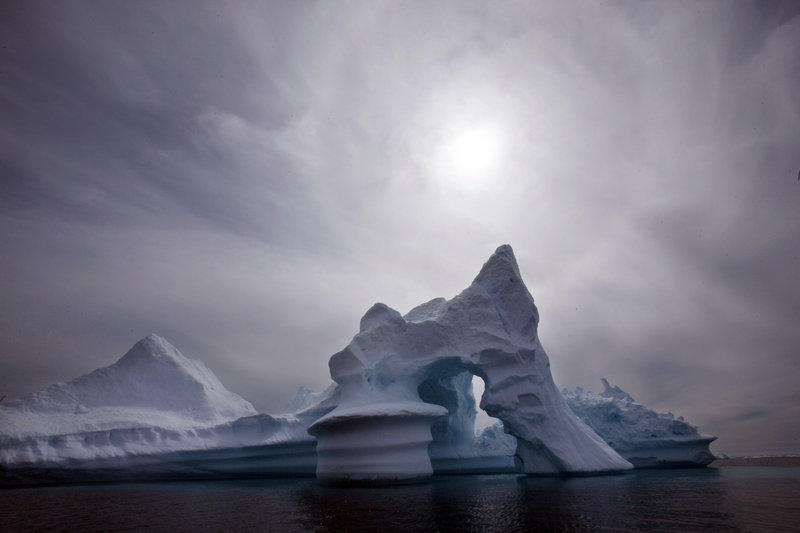STOCKHOLM – The ice of Greenland and the rest of the Arctic is melting faster than expected and could help raise global sea levels by as much as 5 feet this century, dramatically higher than earlier projections, an authoritative international assessment says.
The findings “emphasize the need for greater urgency” in combating global warming, says the report of the Arctic Monitoring and Assessment Program (AMAP), the scientific arm of the eight-nation Arctic Council.
The warning of much higher seas comes as the world’s nations remain bogged down in their two-decade-long talks on reducing emissions of carbon dioxide and other greenhouse gases blamed for global warming.
Rising sea levels are expected to cause some of global warming’s worst damage — from inundated small islands to possible flooding of New York City’s subways. Oceans will not rise uniformly worldwide, because of currents, winds and other factors, but such low-lying areas as Bangladesh and Florida will likely be hard-hit.
The new report, whose executive summary was obtained by The Associated Press, is to be delivered to U.S. Secretary of State Hillary Rodham Clinton and foreign ministers of the other seven member nations at an Arctic Council meeting next week in Greenland. It first will be discussed by some 400 international scientists at a conference this week in Copenhagen, Denmark.
Drawing on improved research techniques and recent scientific papers, the AMAP report updates forecasts made by the U.N.’s expert panel on climate change in its last major assessment in 2007.
The melting of Arctic glaciers and ice caps, including Greenland’s massive ice sheet, is projected to help raise global sea levels by 35 to 63 inches by 2100, AMAP said, although it noted that estimate was highly uncertain.
That’s up from the 2007 projection of 7 to 23 inches by the U.N. panel. The U.N. group had left out the possible acceleration of melting in Greenland and Antarctica, saying research on that hadn’t advanced sufficiently by the mid-2000s. The U.N. estimate was based largely on the expansion of ocean waters from warming and the runoff from melting land glaciers elsewhere in the world.
Now the AMAP assessment finds that Greenland was losing ice in the 2004-2009 period four times faster than in 1995-2000.
In addition, the cover of sea ice on the Arctic Ocean is shrinking faster than projected by the U.N. panel, threatening the long-term survival of polar bears and other ice-dependent species. Summer ice coverage has been at or near record lows every year since 2001, said AMAP, predicting the ocean will be almost ice-free in the summer in 30 to 40 years.
Arctic temperatures in the past six years were the highest since measurements began in 1880, and “feedback” mechanisms are believed to be speeding up warming in the far north.
One such mechanism involves the ocean absorbing more heat when it’s not covered by ice, because ice reflects the sun’s energy. That effect has been anticipated by scientists “but clear evidence for it has only been observed in the Arctic in the past five years,” AMAP said.
It projected that average fall and winter temperatures in the Arctic will climb by roughly 5 to 11 degrees Fahrenheit by 2080, even if greenhouse gas emissions are lower than in the past decade.
Send questions/comments to the editors.



Success. Please wait for the page to reload. If the page does not reload within 5 seconds, please refresh the page.
Enter your email and password to access comments.
Hi, to comment on stories you must . This profile is in addition to your subscription and website login.
Already have a commenting profile? .
Invalid username/password.
Please check your email to confirm and complete your registration.
Only subscribers are eligible to post comments. Please subscribe or login first for digital access. Here’s why.
Use the form below to reset your password. When you've submitted your account email, we will send an email with a reset code.